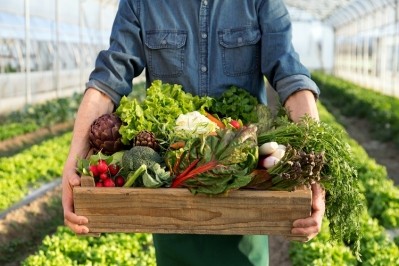Convenience over cooking: The unstoppable food trend

Home cooking has seen a steady decline over the past fifty years. Why? Well, it appears that for many, the lure of convenience is winning against the time and effort involved in cooking.
In fact, figures from Innova Market Insights show that three in five consumers, globally, are using convenience foods once a week or more. Furthermore, one in five is opting for convenience foods more than once a day. And these numbers are on the rise.
“A net increase of 3% in convenience food usage has been observed globally, with developing countries, particularly India and Indonesia, showing the strongest growth,” says a spokesperson for Innova Market Insights.
But, delving deeper, it appears that, as with many trends, this shift is being powered by the younger generation of consumers.
“The growth in convenience foods is largely driven by younger demographics,” confirms a spokesperson for Innova Market Insights. However, they note that higher-income groups are also a major influence.

So why are consumers choosing convenience over cooking?
While restaurant and café culture has been around for centuries, offering people a break from home cooking, and an enjoyable night out, it is only relatively recently that these conveniences have been joined by the ultimate in convenience foods - ready meals, takeaways, and now meal kits. And consumers are happily embracing the variety. So, what are the reasons for the shift from cooking to convenience foods?
The first is, unsurprisingly, timesaving. While previous generations have often relied upon one member of the family working, with the other managing the home, now both partners tend to work, allowing less time for household tasks like cooking.
According to figures from Innova Market Insights, one in five consumers globally say that the lack of time to cook food is the primary reason that they seek convenient solutions in food and beverages.
Additionally, when consumers do choose to cook from home, a third will choose some pre-prepared convenience products, such as pre-grated cheese, to include as part of the cooking process.
Plus, many consumers are reducing the effort involved in home cooking by choosing simpler recipes.
"Home cooks prioritise convenience, with 73% preferring recipes with a short list of ingredients and 64% opting for dishes that only require one pot or tray,” Isabelle Shilling, research analyst for Mintel, told FoodNavigator. “This reaffirms the key importance of convenience as a central selling point for shortcut products.”

The emergence of the meal kit is also helping to encourage consumers to cook at home, providing the precise ingredients and instructions, to create a sort-of hybrid of cooking and convenience – let’s call it ‘cookenience’… or maybe not!
But whatever you want to call the the rise in popularity of meal kits, their success is undeniable, with figures from business intelligence platform, Statista, estimating that global revenue of the meal kit market will grow to around 20.65 billion USD by 2029.
"We can see a general trend towards more convenience," a spokesperson for meal kit company, HelloFresh SE, told FoodNavigator. "Our global data shows that many of our meal kit customers want to spend a maximum of 30 minutes cooking. At the same time, there is a growing trend for healthy balanced and fresh nutrition, which is why cooking at home will stay relevant. Following this trend, our meal kit brands across the globe are working on quick recipes - some markets even want to offer recipes consumers can cook in less than 10 minutes."
Another reason consumers are embracing convenience foods is, as previously alluded to, a form of entertainment. Whether as a fun night out at a restaurant or a fun night in with a takeaway, convenience foods are often regarded as a treat.
However, while the trend towards convenience foods continues to grow, some consumers are still choosing to cook most, if not all, of their meals themselves.
Fun facts about convenience foods
- First café: According to the Encyclopaedia Britannica, the first café is said to have opened, in Constantinople, in 1550. It took another century for the rest of Europe to catch on, with Italy, France, Germany, and England opening their first cafés in the 17th century.
- First restaurant: Meanwhile, the first restaurant is believed to have opened, in Paris, in 1765. Owned by, A. Boulanger, the establishment served soup, with the sign above his door advertising ‘restoratives’, or ‘restaurants’, in reference to the soups and broths available within.
- First ready meal: The first mention of the ready meal dates back further than you might think. In fact, the concept of ready-to-eat meals dates back millennia, with evidence that people have been eating food on the go as far back as Pompeii, before the eruption of Mount Vesuvius in 79CE.

Why some consumers still favour cooking over convenience
While cooking from home carries with it the association of being time consuming and perhaps less exciting than convenience foods, it does also offer some fairly compelling benefits, one being cost saving. Cooking at home is undoubtedly cheaper for consumers than spending on takeaways or eating out as the only cost is the raw ingredients.
Another big influence on cooking versus convenience is the consumer view that homecooked foods are healthier.
“Making meals healthier is the top reason for cooking meals completely/partly from scratch,” says Mintel’s Shilling.
The concern over the health credentials of convenience foods is exacerbated by the growing concern over ultra-processed foods.
“42% of home cooks say that concerns about ultra-processed foods have made them cook at home more compared to a year ago,” adds Mintel’s Shilling. “Meal components such as processed meat, meat substitutes and cooking sauces stand to face growing scrutiny if this topic continues to gather media attention.”
Also, and not to be ignored, is the fact that a lot of people enjoy cooking and see it as an important part of the process.
So how can food manufacturers and retailers benefit from the convenience food trend?

How can food manufacturers and retailers benefit from the convenience trend?
If food manufacturers and retailers are keen to try to tempt consumers away from convenience foods and towards the shops, then making home cooking convenient seems to be the way to go.
“Highlighting on-pack, and in marketing where only a few additions are needed to create a meal will help main meal component products to tap into the desire for convenience,” suggests Mintel’s Shilling. “Locating meal components together in store, including as part of recipe bundles, remains another pertinent way to highlight how a product allows home cooks to create a dish with few ingredients.”
Directly addressing consumer concerns over ultra-processed foods is also essential.
“There’s an opportunity for less processed variants and preservative-free frozen foods to win favour,” says Hui.
He also underlines the importance of food manufacturers moving towards 'clean label' foods and to highlight when a product is clean label.
What does ‘clean label’ mean?
Though there is no official definition, ‘clean label’ is the concept of making a product using as few ingredients as possible, and ensuring those ingredients are ones that consumers recognise. These will ideally be ingredients that consumers would themselves use when cooking at home.




















